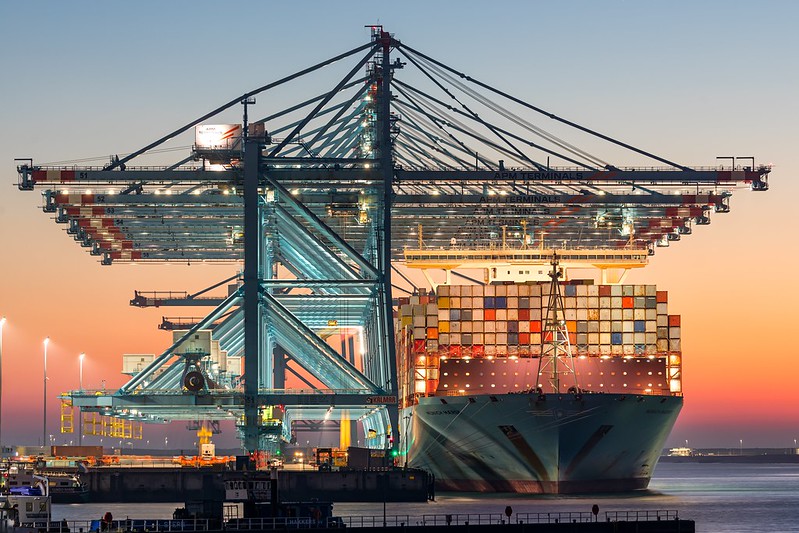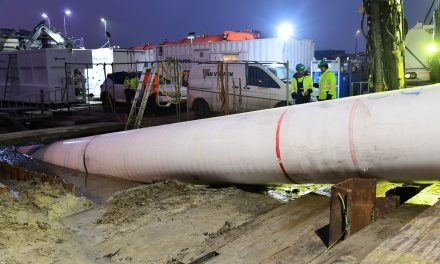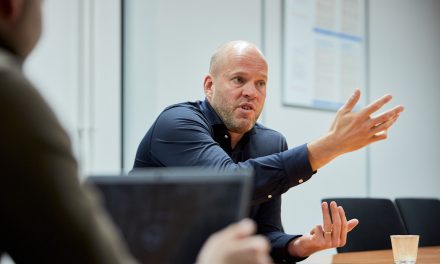
Onderzoek naar walstroom voor zeeschepen

Foto: APM Terminals
Het Havenbedrijf Rotterdam en de gemeente Rotterdam gaan de aanleg van walstroom bij vier terminals in de haven onderzoeken. De EU draagt hier 1,3 miljoen euro aan bij.
Het onderzoek spitst zich toe op de aanleg van walstroom bij vier terminals: Vopak Botlek, ECT, APMT2 en Cruiseport Rotterdam. Het doel van de studie is uit te vinden hoe walstroom in de haven kan worden uitgerold, om zo CO2-uitstoot en luchtverontreiniging te verminderen. Het onderzoek moet in 2024 klaar zijn.
Walstroom
In de afgelopen tien jaar zijn de meeste kades voor binnenvaartschepen al voorzien van walstroom. Ook heeft de terminal van Stena Line in Hoek van Holland walstroom en op de Landtong Rozenburg kunnen vanaf begin volgend jaar ook grote offshore schepen van walstroom gebruikmaken.
Complex
Walstroom voor zeevaart is complex, legt ceo Allard Castelein van het Havenbedrijf Rotterdam uit. “Dat komt onder andere door het forse stroomverbruik en het feit dat veel zeeschepen nog niet de juiste aansluitingen aan boord hebben om gebruik te maken van walstroom. Voordat reders investeren in de nodige aanpassingen, willen ze zeker weten dat hun schepen gebruik kunnen maken van walstroom, ook in andere havens. Daarom werkt Havenbedrijf samen met havens als Antwerpen, Bremen, Hamburg en Le Havre aan de ontwikkeling en planning van walstroomfaciliteiten. Dat moet leiden tot een versnelling van de toepassing van walstroom.”
Zie ook: Derde termijn voor Castelein bij havenbedrijf
English translation
Research into shore-based power for sea-going vessels
The Port of Rotterdam Authority and the municipality of Rotterdam are going to investigate the installation of shore-based power at four terminals in the port. The EU contributes 1,3 million euro.
The study focuses on the installation of shore-based power at four terminals: Vopak Botlek, ECT, APMT2 and Cruiseport Rotterdam. The aim of the study is to find out how shore-based power can be rolled out in the port to reduce CO2 emissions and air pollution. The study should be completed in 2024.
Shore-based power
In the past ten years, most quays for inland vessels have already been equipped with shore-based power. The Stena Line terminal in Hoek van Holland is also equipped with quayside electricity and at Landtong Rozenburg large offshore vessels will be able to use quayside electricity as from the beginning of next year.
Complex
Shore-based power for maritime shipping is complex, explains CEO Allard Castelein of the Port of Rotterdam Authority. “One of the reasons for this is the high power consumption and the fact that many ships do not yet have the right connections on board to make use of shore-based power. Before investing in the necessary adaptations, shipowners want to be sure that their ships can make use of shore-based power, also in other ports. That is why the Port Authority is working together with ports such as Antwerp, Bremen, Hamburg and Le Havre on the development and planning of shore-based power facilities. This should lead to an acceleration in the use of quayside electricity.”









